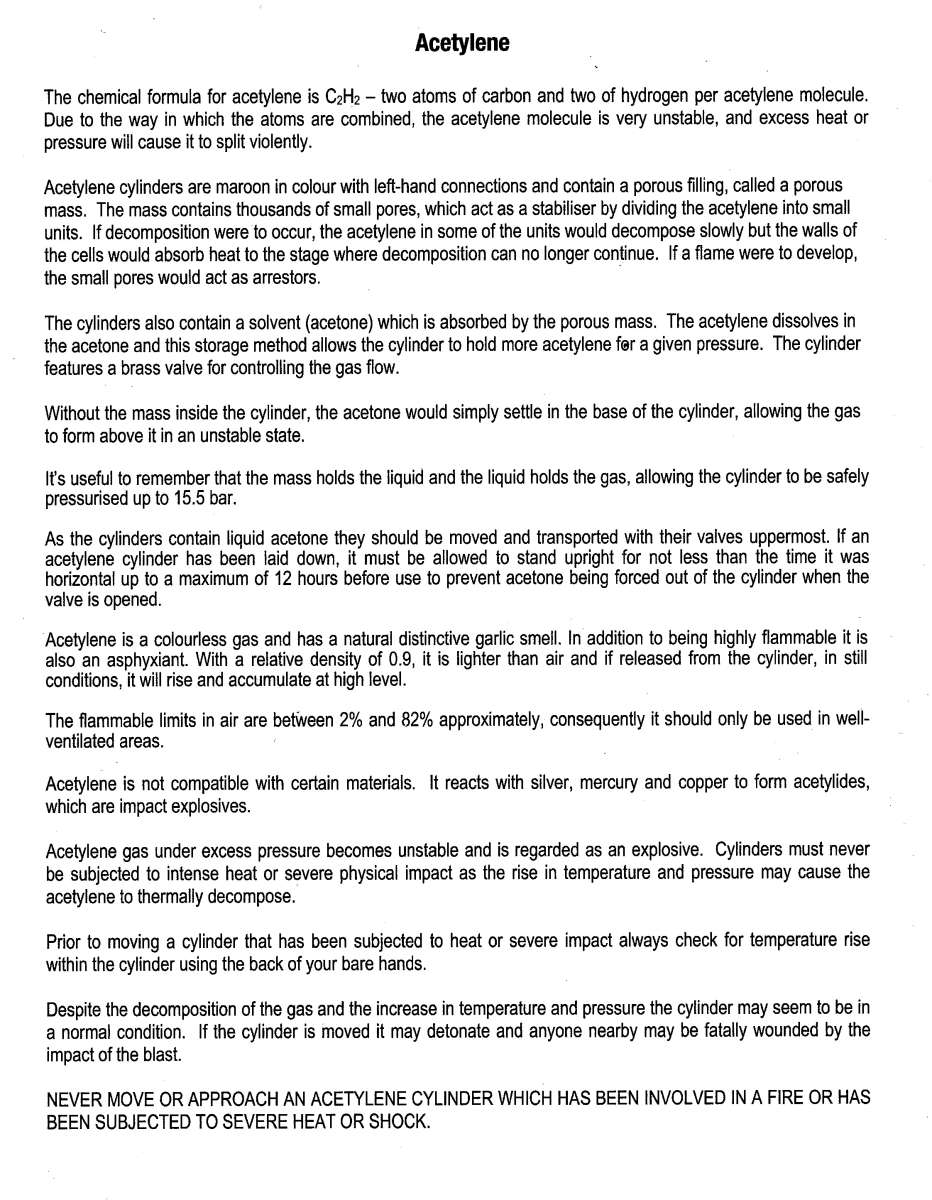Hi, there is nothing wrong exactly with transporting acetylene in your car whether it’s lying flat or upright, but you should whenever possible, transport them upright, but if you have transported it lying flat, it must be stood upright for the same amount of time, for up to 12 hours, before opening the valve. Not sure about the law as far as for domestic use, but in a commercial use, you should have one of those hazard warning signs on your vehicle, and also a compressed gas one if you are carrying compressed oxygen.
https://www.safetysigns4less.co.uk/Safety-Signs/Hazard-Specific-Signs/Hazard-Warning-Diamonds/Flammable-Gas?utm_source=google&utm_medium=product_feed_or_listings&pl=STD&ccv=Y&sku=6D002AF-S&gad_source=1&gclid=Cj0KCQiAz8GuBhCxARIsAOpzk8yGWdc07Iiv84J9nq0oT8Bk4-xzRzlnctRajfCzptY4d5Kc7AU6_rIaAtY1EALw_wcB
One thing you must not do, is carry any of them on a public road, with your equipment attached to them. A few notes about acetylene in the scan below, which includes the way it is contained in the cylinder.

There is always some gas at the top of the cylinder, ready to be used, and you are only able to draw two thirds of the contents, as time is needed for the acetylene to be released from the acetone, so when you get towards getting empty, you will find the flame will become smaller and smaller. Decanting from a full one to an empty one is a total no no, as they need a proper installation to do it safely, as it needs time to dissolve into the acetone, and is done in stages.
While it is not really anymore dangerous to use acetylene in your home workshop than an industrial one, per se, and I’m not saying you should handle it with kid gloves, but inspecting your equipment regularly for wear & tear and any damage, is just as important as it is in industrial places, and your regulators and flashback arresters have a year date on them when they should be replaced, and this applies to any that are in use and any that you have sitting in a cupboard as a spare, if they don’t have a date on them, I would urge you not to use them and get them replaced. Don’t get complacent about acetylene, as it won’t care one bit where it explodes, if it gets a chance to do so, and if you are anywhere near it if it does explode, you won’t know about it.
Regards Nick.
KWIL.





